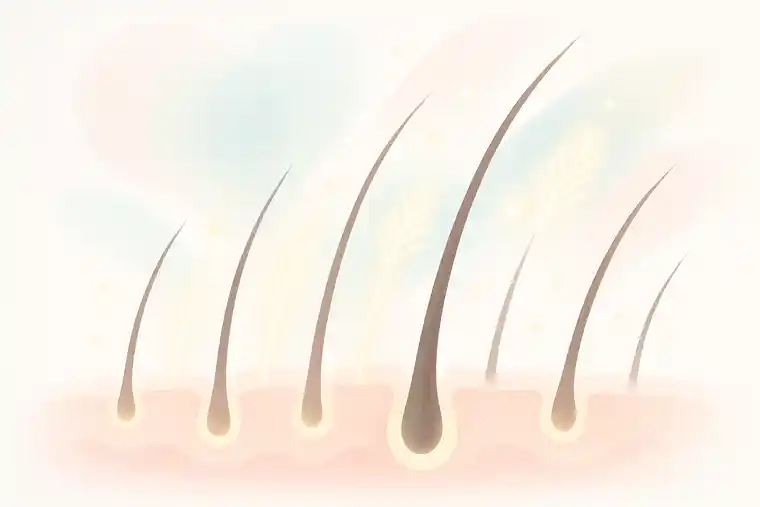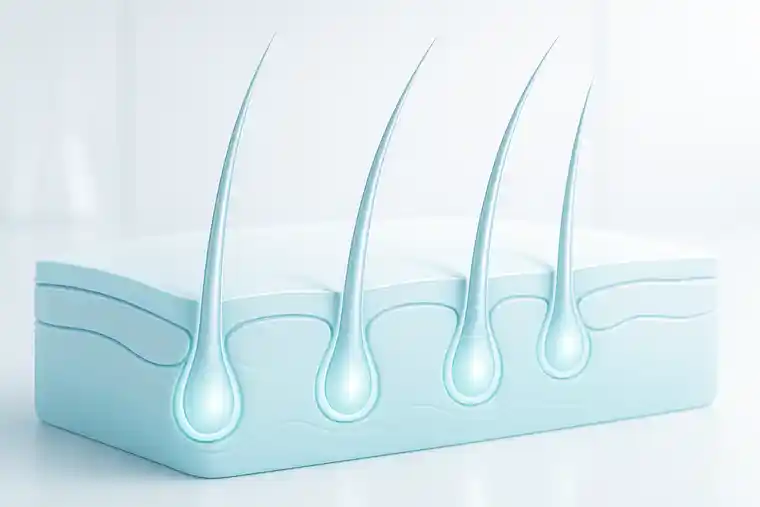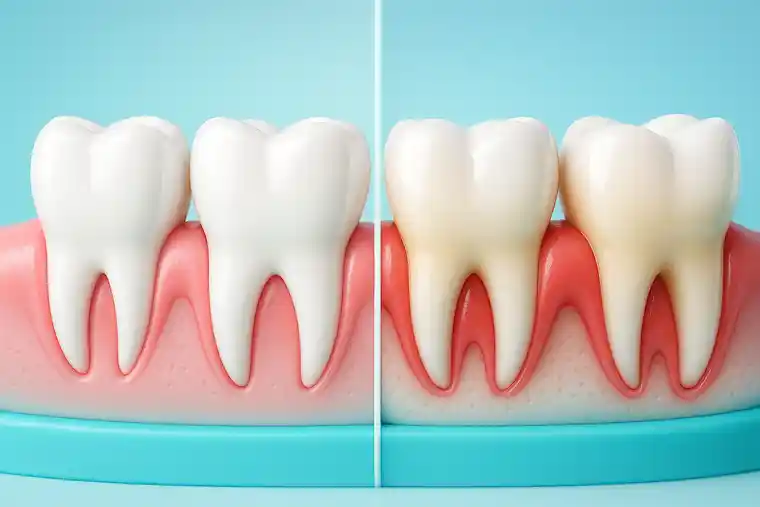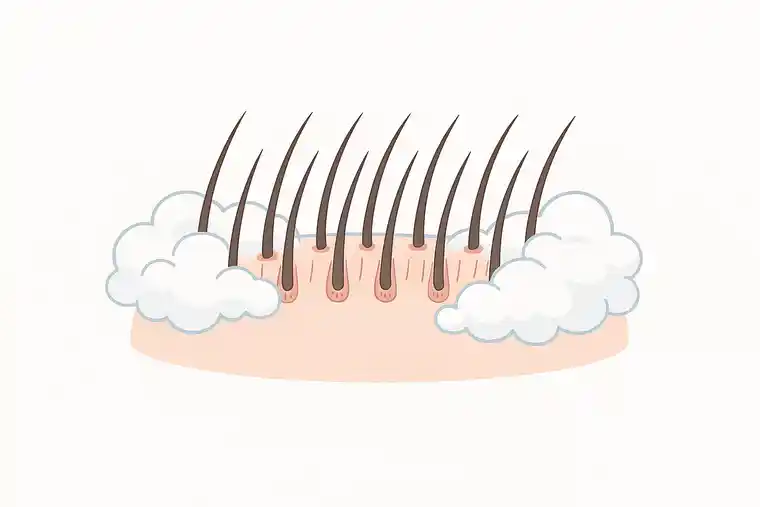Hair Transplant for Women: Myths, Methods, and Modern Solutions

Written by Dr. Mustafa Dikeç
Who says, that there is no Hair Transplant for Women?
Losing your hair can be an emotional nightmare for most of us. You watch your hair that has taken years to grow fall out, and there is nothing you can do about it. It is especially difficult for women since hair is symbolic of femininity, beauty, and general self-esteem.
But here’s the good news:
Modern science and technology have changed all that. Hair transplants are no longer just for men! Women can benefit, too, from the new modern hair transplant techniques that are now available and are designed for their particular hair loss patterns.
But there remains a tremendous amount of misinformation that needs to be corrected about hair transplants. Some of it is erroneous, some is outdated, and some of it bears no relationship whatever to female hair loss.
In this article, we will try to set the record straight, doing so we will separate fact from fiction, and finally look at the hair restoration options that are available to women.
Table of Contents
Hair Loss in Women
The normal shedding of hair is quite normal for women. On average, it is estimated that people shed from 60 to 100 individual hair fibers every single day, which amounts to quite a loss over a long period of time.
When the shedding becomes what one might call alarming, that is, when the amount of hair that falls out begins to be greatly in excess of the normal, and no new hair grows to take the place of that which has fallen out, then there is a condition of hair loss, commonly called “alopecia.”
The time has gone by when people thought that the matter of hair loss was merely a “man’s problem.” Women are afflicted with hair loss exceedingly more than they ever thought they were. In fact, a recent study points out that as many as 50% of women have noticeable hair loss by age 50.
Types of Hair Loss

Women have different types of hair loss. Below are some of the types:
Anagen Effluvium
This is a type of temporary hair loss which occurs after the hair follicles (the growing hair) (anagen) is damaged. Often anagen effluvium is triggered by one of the following:
- Chemotherapy
- Radiation therapy
- Antimetabolitic and immunosuppressant drugs
- Lupus and other autoimmune conditions
- Prolonged exposure to toxic substances.
Telogen Effluvium
This is a temporary type of hair shedding caused by stress, illness or a major shock. The basic way it works is the following: When your body goes into shock from stress, the hair follicle is prematurely pushed into the telogen (resting) phase. And some month or two later, the affected hair sheds: other triggers of this would be:
- Major surgery or illness
- Major dietary changes
- Female pattern hair loss (FPHL)
- Bad infections
- Post-partum (After Childbirth) shedding
- Severe trauma or illness.
Female pattern hair loss (FPHL)
This type of hair loss is genetically programmed in origin. It presents differently for men and for women. In women, the hair thins gradually over the scalp, and so gives a wider appearance to the middle part as it develops over time. Apart from genetics, other potential triggers would be:
- Deficiencies in micronutrients
- Hormonal changes
- Severe illnesses
Women Hair Transplant Explained
The hair transplant process for male and female patients is such that it is directed toward the same goal: restoration of hair that has been lost. For women, the process is the meticulous removal of hair follicles from other healthy zones of the scalp to the areas where hair has fallen out.
This process, however easy it seems, needs a more delicate and individualised treatment for it to be successful. This is because women’s hairlines have different aesthetic designs, and these designs need to be planned precisely and individually.
Steps Involved in Women Hair Transplant
The doctor carefully removes the hair follicles from the donor area(s)
This done, the harvested hair follicles are specially prepared for implantation.
The surgeon then makes tiny incisions in the area where hair has fallen out and carefully implants the extracted follicles into the tiny incisions made in these areas. Each graft will be placed at a particular angle, and this angle/direction has to be such that it will grow out in the same direction as is that of the existing hair.
Modern Women Hair Transplant Options

There are many different advanced hair restoration techniques that have been formulated especially for use in hair transplant for women. Some of those options are explained below.
Follicular Unit Extraction (FUE)
This technique is carried out by the use of a very small puncturing device, whereby the hairs are extracted directly from the donor areas.
This technique is preferred by most female patients, and from the many advantages which there is in this method, it is not difficult to see why. Some of the advantages are the method…
- is less painful
- is virtually scarless (the linear scar healing within a few months)
- is less traumatic
- allows for the extraction of hairs from other areas of the body.
Direct Hair Implantation (DHI)
Also known as the pen method because it involves the use of a pen-like instrument (Choi Implanter Pen) to implant the hair follicles.
The DHI technique is relatively simple, consisting of the extraction of the hair follicles from the donor area and the simultaneous implantation of the follicles in the recipient area. The advantages of this technique include:
- It is generally considered the most accurate technique.
- The procedure is relatively quick.
- It is less traumatic.
Robotic Hair Transplantation
This technique is a combination of the surgeon’s expertise with the precision of a robot.
This is done through the following procedure: An AI-guided robot arm is used to locate and extract follicular units with great accuracy, after which the role of the doctor will be to implant the follicles manually, ensuring a result that is natural and aesthetically pleasing. Advantages of this technique are:
- It is a very quick procedure.
- There is precise harvesting and implantation of grafts.
Debunking Common Myths about Hair Transplant for Women

Over the years, there have been some misconceptions flying around about hair transplant for women. In this section, we are going to look at some of them and try to set the record straight
Myth 1: Hair transplants don’t work for women
This couldn’t be farther from the truth. Women, just like men, are also eligible for hair transplants. The only difference is that there are more restrictive candidacy requirements for females than for males.
Typically, women with sufficient donor hair, good general health, stable hair loss, and defined thinning patterns make excellent candidates.
That said, when women DO qualify, the results can be remarkable. The key is getting a proper evaluation to know if you fit the profile
Myth 2: It’s Just for Older Women
Age isn’t really the determining factor. We have seen women in their 20s who are good candidates and women in their 60s who aren’t.
It depends on your specific situation, i.e., hair loss pattern and cause of hair loss, stability of your donor area, overall health condition, and whether hormonal treatments have been tried.
That said, surgeons are usually more conservative about transplanting younger women because hair loss patterns might not be fully established yet. You don’t want to transplant into an area that’s going to thin out later.
Myth 3: You Need to Shave Your Entire Head
This is a big concern for women, and we totally understand why. The good news, though, is modern techniques often don’t require shaving your whole head.
FUE procedures can sometimes be done with minimal shaving or even long-hair FUE, where only the donor hairs being extracted are trimmed. The transplanted area doesn’t need to be shaved either. You can often style your existing hair to cover any small shaved sections during healing.
Complete head shaving is still done in some cases because it gives the surgeon better access and visibility. But it’s not always necessary, and many clinics now offer “no-shave” options specifically for women.
Myth 4: Results Are Immediate after Hair Transplant for Woman
If only. Here’s the reality—after the transplant, those hairs fall out within a few weeks. This is normal. The follicles stay in place, but the hair shafts shed.
New growth starts around month 3-4. Significant visible improvement happens around months 6-8. Final results take 12-18 months. It’s a process that requires patience. Trust us, anyone promising instant fullness is lying to you.
Myth 5: One Procedure Fixes Everything Forever
Sometimes yes, often no. It depends on several factors, like how advanced your hair loss is, how much donor hair is available, your expectations for density, and whether your hair loss is progressive.
Many women get beautiful results from one procedure. Others might want or need a second session for additional density. And if you have ongoing hair loss, you might need touch-ups years later as the surrounding hair continues thinning.
Finding the right path forward
Hair loss can have a negative psychological and emotional effect on anyone affected by it. This is because directly or indirectly, it affects self-image and confidence.
If you are experiencing hair loss, take the time to make your research. Consult with professionals specializing in female hair loss to find out which option will be best for you. Also, do not let anyone pressure you into deciding on hair replacement surgery.
That said, if you are a woman and you’re thinking about undergoing hair transplant surgery, Hospital XP in Istanbul, Turkey, would be happy to assist you in finding the right hair loss treatment for you.
Hospital XP, a subsidiary of DentSpa, has been giving superior patient care and high-quality, natural looking results for over 25 years, making use of the most advanced tech.
For those who are inspired by this MedClinics blog, remember that your path to a new smile is just a phone call away. Anyone interested in finding out more should contact MedClinics. There you will be in the best hands.
Get a free consultation and a no-obligation quote now!
Stay Updated
Follow our blog for the latest in medical and aesthetic treatments, tips for maintaining healthy teeth, and inspiring patient success stories.
FAQ’s about Women Hair Transplant

Do I need to shave my whole head before a hair transplant?
No, no, you don’t. That’s one of those myths that just won’t die. Most clinics actually offer what they call a no shave or partial shave option, especially for women. They only work on the area they need, and then your existing hair can be styled to cover it. So you’re not walking out looking bald.
When will I start seeing results?
Alright, so this part can feel a bit scary. In the first few weeks, the transplanted hairs usually shed. Totally normal. After that, real growth starts around month three. And the full results, the proper final look, usually show up somewhere between month twelve and eighteen. It’s slow, I know… but it’s worth it.
Does the procedure hurt?
To be frank…not really. They use local anaesthesia, so during the procedure you’re pretty comfortable. Afterward, you might feel a little tightness or soreness for a few days. Like you slept funny on that side of your head. Nothing dramatic.
Can the transplanted hair fall out again later on?
The transplanted hairs themselves shouldn’t. Those follicles are taken from areas that are resistant to thinning. The hair around them, though… yeah, that can still thin with time. That’s why some folks do touch up sessions years later. But the transplanted ones are meant to stay.
Are there non surgical options for women with hair loss?
Yep, definitely. Things like PRP treatments, topical options, lifestyle tweaks, even hormonal balancing treatments. There are quite a few routes to try. The best thing is to speak with a proper specialist who can look at your situation and tell you what actually makes sense for you.
Get your free consultation
- Need guidance and reassurance?
- Talk to a real person from MedClinics!
- Let's find the perfect doctor together.





